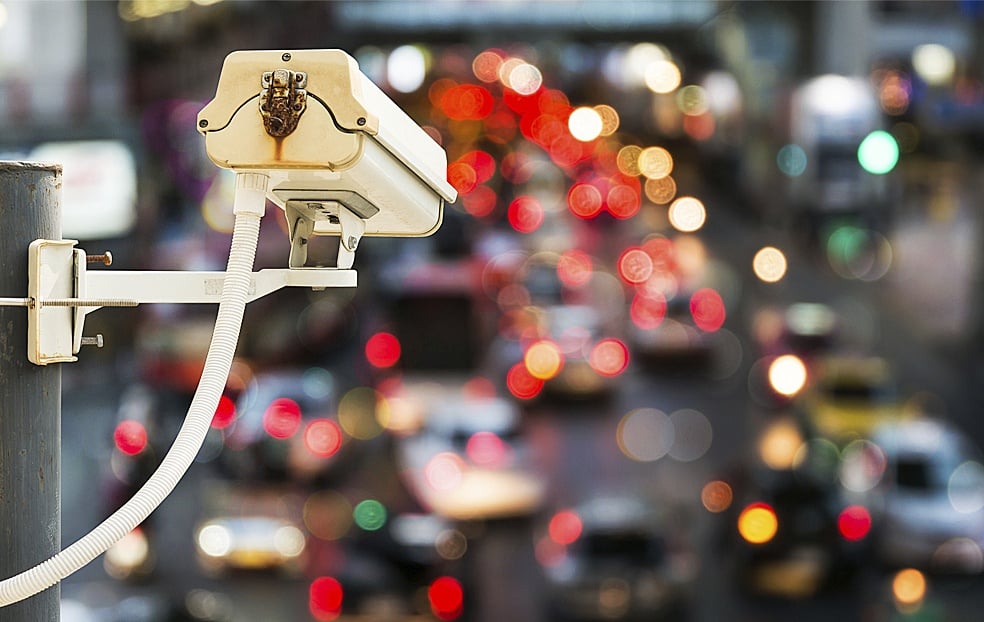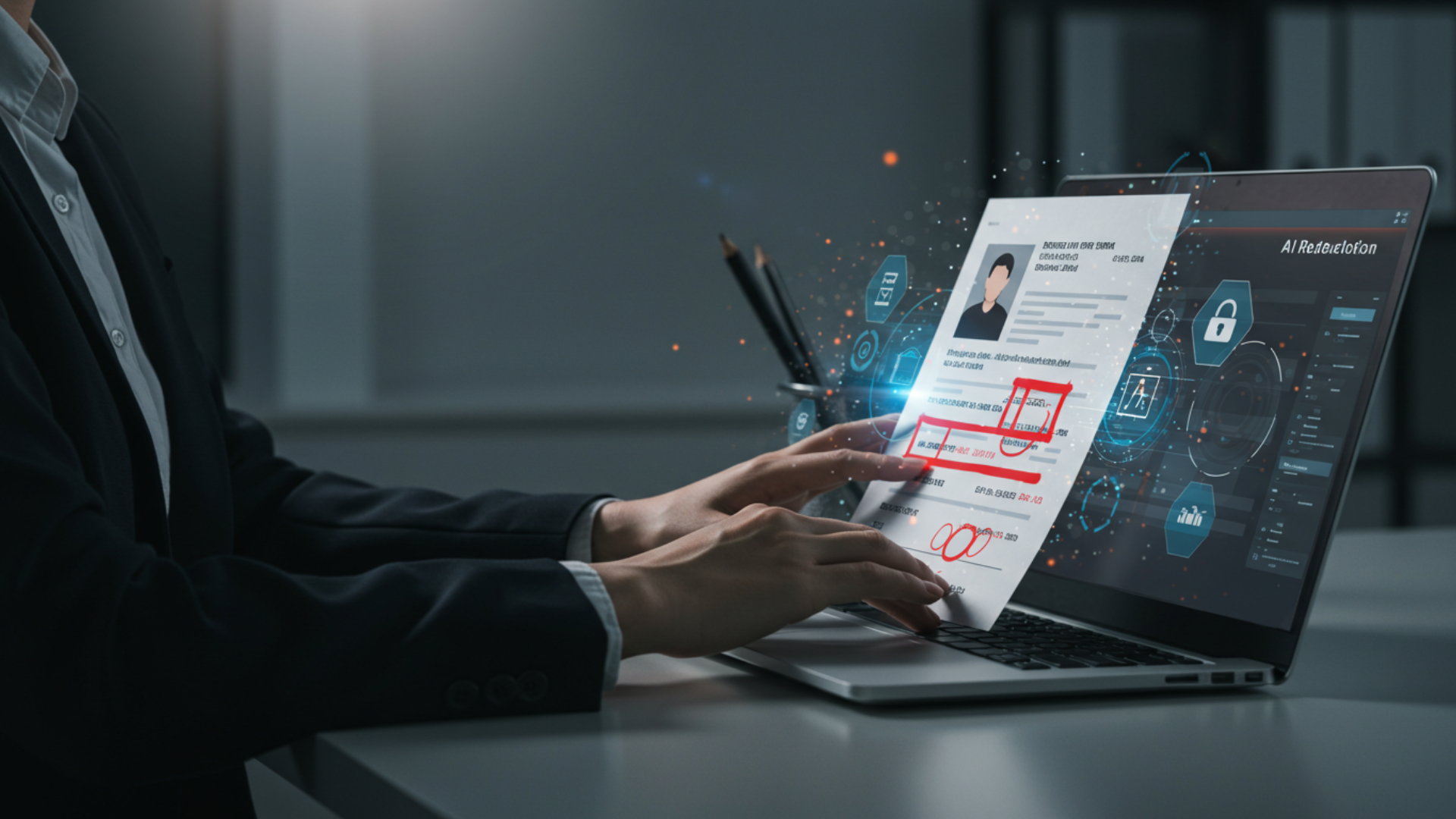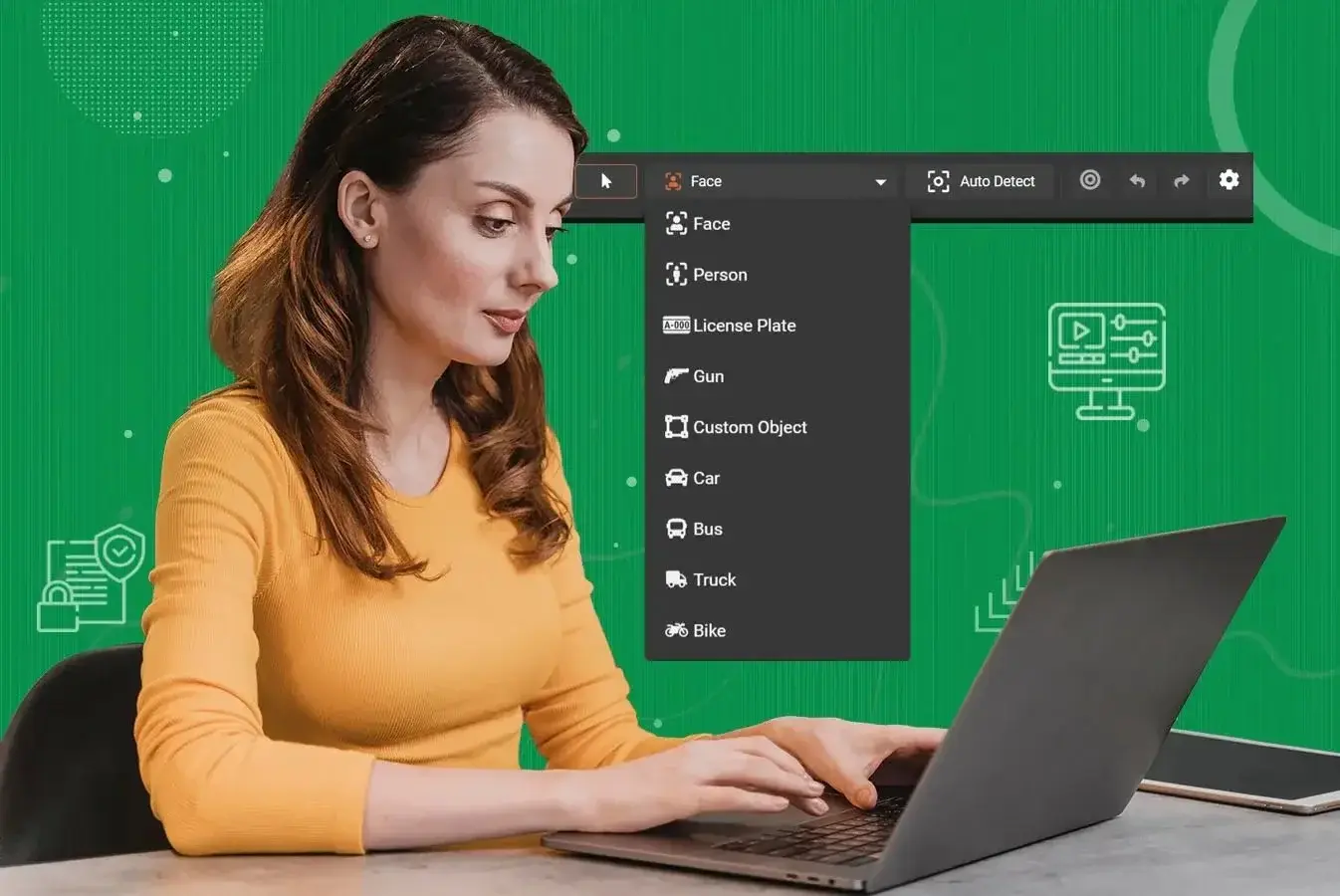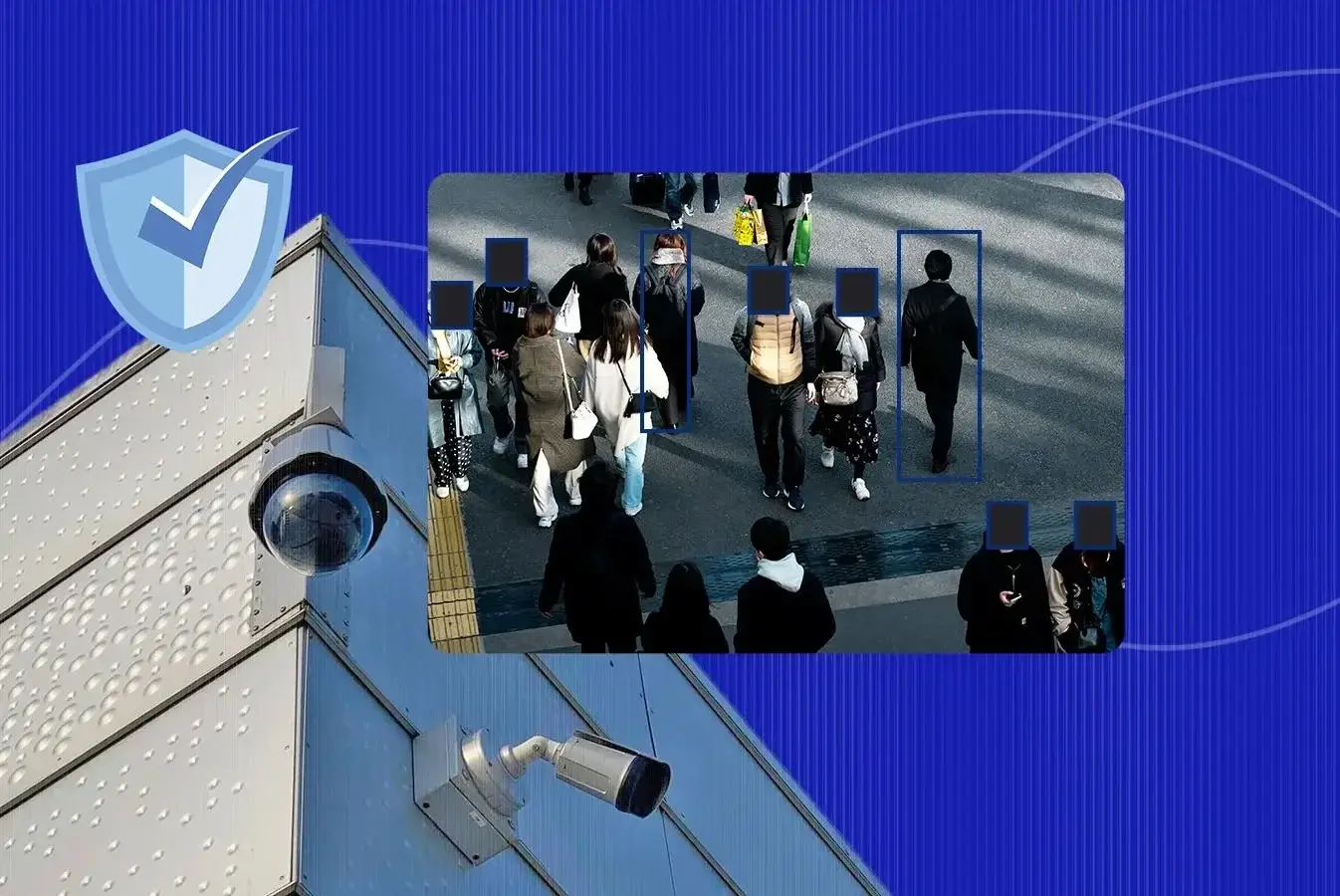10 Ways CCTV Redaction Software Improves Public Safety and Commercial Security
by Sarim Suleman, Last updated: November 19, 2025, Code:

CCTV redaction software is transforming public safety and commercial security by protecting sensitive data, ensuring compliance, and streamlining surveillance management. This blog explores 10 key ways AI-powered CCTV redaction enhances security while safeguarding privacy.
The use of CCTV surveillance has become a cornerstone of public safety and commercial security, with statistics showing that nearly 500 million surveillance cameras are installed worldwide. Video surveillance is crucial in deterring threats and ensuring accountability. However, it also presents a significant challenge: protecting sensitive information and complying with privacy laws.
A 2024 IBM Security report revealed that data breaches involving personal information cost businesses an average of $4.88 million per incident. With CCTV footage often containing confidential details, failing to redact such information can result in legal violations, financial penalties, and reputational damage.
Enter CCTV redaction software, an AI-powered technology that automatically detects and blurs sensitive elements in videos, ensuring compliance and preventing unauthorized exposure.
With 15 billion gigabytes of data from surveillance cameras being produced every week, relying on manual redaction is simply not practical. The sheer volume of footage makes manual processes slow, costly, and error prone. In contrast, automated CCTV redaction software processes hours of video in minutes, enhancing efficiency, accuracy, and security.
Beyond compliance, redaction also mitigates security risks. Unprotected video files are vulnerable to cyberattacks, unauthorized access, and data leaks. By implementing AI-driven redaction tools, organizations can safeguard privacy, strengthen security, and streamline video management.
This blog explores 10 ways CCTV redaction software enhances safety and security, helping businesses, law enforcement, and public institutions protect sensitive data, comply with regulations, and optimize surveillance operations.
Understanding CCTV Redaction Software
Video surveillance plays a crucial role in security but raises concerns about privacy and data protection. Therefore, it's necessary that organizations handle CCTV footage responsibly to avoid privacy violations, legal risks, and potential fines. CCTV redaction software enables secure, lawful use of video data by automatically concealing sensitive details before sharing or storing footage.
CCTV redaction software is a specialized tool designed to blur or obscure sensitive information in surveillance footage. It helps protect personally identifiable information (PII), such as faces, license plates, and confidential documents, ensuring compliance with data protection regulations like GDPR, HIPAA, and CCPA.
How Automated CCTV Redaction Software Works
With the rise in surveillance technology, the volume of recorded footage is increasing rapidly. Manual redaction is no longer practical, as processing such vast amounts of data is time-consuming and inefficient. As a result, organizations are shifting toward automated CCTV redaction software to enhance efficiency, accuracy, and compliance with privacy regulations.
Modern CCTV redaction leverages artificial intelligence (AI) and machine learning to detect and redact sensitive elements in video footage. AI-powered systems automatically identify and blur faces, persons, vehicles, license plates, weapons, and other identifiable objects. This automation reduces manual effort, speeds up processing, and ensures compliance with privacy laws and security regulations.
AI-powered CCTV redaction processes hours of footage within minutes, offering scalability, accuracy, and cost-effectiveness. Automated redaction is the preferred solution for securing video data while ensuring legal compliance for businesses, law enforcement, and public institutions.
10 Ways CCTV Redaction Software Improves Safety and Security
In an era where surveillance is crucial for security, CCTV cameras capture everything—good and the bad. While they help deter crime and enhance safety, they also record personally identifiable information (PII), raising serious privacy and compliance concerns. This is where CCTV redaction software plays a vital role—protecting sensitive data, ensuring legal compliance, and streamlining investigations. Here are 10 ways AI-powered redaction is transforming video security while safeguarding privacy.
1. Safeguarding Privacy in Surveillance Footage through CCTV Redaction Software
One of the primary reasons for using CCTV redaction is to protect personally identifiable information (PII) in surveillance videos. Unredacted footage may expose sensitive details such as faces, persons, vehicles, license plates, and personal information in images and videos, leading to potential privacy breaches.
CCTV redaction software ensures privacy protection by automatically blurring or masking identifiable elements, making surveillance footage safer to store, share, and distribute.
Redacting video footage is essential in the following cases:
- The video contains sensitive personal information such as bystanders' faces.
- You need to share footage with third parties while ensuring compliance.
- The video may be used for legal or investigative purposes.
- Your organization must comply with privacy laws like GDPR, HIPAA, or CCPA.
For example, businesses conducting workplace surveillance can use CCTV redaction software to protect employee privacy while still maintaining security and compliance with labor laws.
2. Ensuring Compliance with Data Protection Laws on Surveillance Footage
With increasing regulations surrounding data privacy, organizations must take extra precautions when handling surveillance footage. Laws such as GDPR, HIPAA, and CCPA mandate that businesses redact personal information before sharing or storing videos.
Failure to comply can result in:
- Hefty fines and legal penalties. Under GDPR, severe violations can lead to fines of up to 20 million euros or 4% of the organization's global turnover from the preceding year, whichever is higher.
- Loss of customer trust and reputational damage.
- Lawsuits due to privacy violations.
Automated CCTV redaction software simplifies compliance by removing identifiable information before footage is shared or retained. This makes it easier for businesses to meet regulatory requirements while continuing to use CCTV for security and monitoring.
3. Preventing Unauthorized Access to Surveillance Footage
Unprotected video files pose a significant security risk, as unauthorized access can lead to data leaks, cyberattacks, and privacy violations, potentially exposing individuals or confidential business information.
Modern CCTV redaction software implements strict security protocols to ensure stored video files remain safe and inaccessible to unauthorized users. Even when redaction is not applied, surveillance footage is securely managed within the software, minimizing the risk of data breaches. Advanced redaction software, such as VIDIZMO Redactor, provides a designated library to store all redacted files, with features like encryption, granular access control, and limited sharing.
To enhance video security, organizations should consider software that incorporates the following proactive measures:
- Encrypt stored video files to prevent unauthorized access.
- Implement granular access controls to restrict viewing permissions.
- Use limited sharing options with tokenized URLs and password protection for added security.
- Maintain chain of custody reports to track video access and modifications.
- Enable multi-factor authentication (MFA) to strengthen user verification.
By leveraging AI-powered redaction tools, businesses can ensure that only authorized personnel access critical video evidence, while also protecting the privacy of individuals captured on camera.
4. Enhancing Law Enforcement Investigations with AI-Powered CCTV Redaction
Law enforcement agencies frequently use surveillance footage for investigations. However, raw, unfiltered videos may inadvertently expose victims, bystanders, or undercover officers, putting lives at risk.
CCTV redaction helps police by:
- Automatically blurring faces, license plates, and sensitive objects.
- Allowing officers to safely present video evidence in court without violating privacy laws.
- Protecting confidential informants and witnesses involved in legal cases.
For instance, when a city releases CCTV footage to the public, automated redaction ensures that bystanders' identities remain anonymous, preventing any legal or ethical concerns.
5. Improving Workplace Security While Protecting Employee Privacy
Many businesses use CCTV to monitor workplace activities, deter misconduct, and ensure employee safety. However, continuous surveillance can create privacy concerns if video footage is not properly handled.
To maintain a balance between security and employee rights, businesses should:
- Use CCTV redaction software to blur unnecessary details.
- Apply access control policies to limit who can review surveillance footage.
- Comply with employment laws that regulate workplace monitoring.
By implementing redaction tools, businesses can protect both their security interests and employees' privacy, reducing the risk of legal disputes over excessive surveillance.
6. Strengthening Public Surveillance Without Violating Privacy Rights
Public safety initiatives often rely on surveillance systems to monitor crowded areas, traffic intersections, and city streets. However, mass surveillance without proper safeguards raises concerns about citizens’ privacy rights and government overreach.
To ensure responsible surveillance practices, public agencies can:
- Use CCTV redaction software to blur non-relevant individuals in footage.
- Redact license plates and street signs before releasing videos to the media.
- Balance security needs with civil liberties by anonymizing unnecessary details.
For example, when law enforcement shares footage of a crime scene with the public, automated redaction ensures compliance with privacy laws while still allowing authorities to request assistance in identifying suspects.
7. Protecting Victim and Witness Identities Through Redacting Footages
Video evidence is often used in courtrooms, legal investigations, and trials. However, presenting raw CCTV footage may put victims, minors, or key witnesses at risk if their identities are exposed.
To ensure fairness and safety in legal proceedings, CCTV redaction software can:
- Automatically blur the faces of victims and witnesses before videos are presented in court.
- Ensure compliance with legal confidentiality requirements such as Crime Victims' Rights Act (CVRA), FRE Rule 611, GDPR and HIPAA, which require appropriate obscuring of personally identifiable information.
- Help attorneys and law enforcement use surveillance footage without violating privacy rights.
Redacting sensitive video elements ensures that legal proceedings remain fair, secure, and in compliance with court regulations.
8. Streamlining Video Sharing with Media and Public
Organizations often need to share surveillance footage with journalists, community groups, or the general public. However, releasing raw, unredacted videos can expose private details and cause legal issues.
To ensure secure and compliant video sharing, businesses should:
- Redact personally identifiable information before distributing footage.
- Use AI-powered tools to quickly blur sensitive areas.
- Ensure that only relevant parts of the video are shared.
For example, when news outlets broadcast security footage, CCTV redaction software ensures that innocent bystanders' identities remain protected while still providing transparency to the public.
9. Reducing Operational Costs and Time Spent on Manual Redaction
Manually editing video footage from CCTV is time-consuming, expensive, and inefficient. Traditional redaction methods require employees to go frame-by-frame, blurring sensitive details—an impractical approach for organizations dealing with large volumes of surveillance data.
By implementing AI-powered redaction software, businesses can:
- Automate the redaction process, saving time and labor costs.
- Reduce the risk of human error in manual editing.
- Scale video processing capabilities without increasing operational expenses.
AI-driven solutions ensure that surveillance footage is efficiently redacted, allowing organizations to focus on core security operations.
10. Enhancing Security Footage Usability Without Compromising Privacy
Surveillance footage is often used for training, audits, security assessments, and forensic analysis. However, privacy concerns prevent organizations from freely sharing raw video data.
By redacting non-essential details, organizations can:
- Safely share footage for security research and training purposes.
- Ensure compliance with corporate policies and privacy laws.
- Improve incident investigations without violating confidentiality agreements.
For instance, law enforcement agencies can use redacted footage for officer training, allowing them to learn from past incidents without exposing sensitive information.
VIDIZMO Redactor: Ensuring Privacy and Compliance with CCTV Redaction Software
VIDIZMO Redactor is a cutting-edge AI-powered CCTV redaction software designed to automate the redaction of sensitive elements in CCTV footage. This advanced software is specifically developed to enhance video security while ensuring privacy protection and compliance with stringent data protection laws like GDPR, HIPAA, and CCPA.
With VIDIZMO Redactor, organizations can quickly and accurately blur faces, persons, vehicles license plates, weapons, and other personally identifiable information (PII) in surveillance footage, preventing unauthorized exposure and ensuring secure sharing. It supports granular access controls and encryption, making it an ideal solution for businesses, law enforcement, and public institutions that handle large volumes of sensitive video data.
With features like bulk redaction, transcript-based redaction, and spoken PII redaction, VIDIZMO Redactor ensures that personally identifiable information (PII) is effectively obscured across all file formats. The bulk redaction feature allows large volumes of CCTV footage to be processed efficiently, saving significant time and effort. By leveraging these advanced capabilities, VIDIZMO Redactor enhances security, compliance, and operational efficiency, making it a powerful CCTV redaction software for managing sensitive video footage.
By utilizing VIDIZMO Redactor, organizations can streamline the redaction process, reduce manual errors, and safeguard privacy—ensuring that all video data remains compliant, secure, and easily manageable.
The Future of CCTV Redaction Software in Security and Compliance
As surveillance technology advances, the demand for CCTV redaction software is greater than ever. Organizations must ensure video security while complying with global data protection laws. Failing to redact PII can result in legal risks, reputational damage, and loss of public trust.
AI-powered CCTV redaction software helps businesses and government agencies protect privacy, enhance security, and streamline video processing. Automated redaction ensures compliance with GDPR, HIPAA, and CCPA, while also reducing costs and improving efficiency.
The future of surveillance relies on responsible data management. Investing in AI-driven redaction solutions enables organizations to securely share video footage without privacy concerns, ensuring compliance and ethical video usage.
People Also Ask
What is CCTV redaction software, and why is it important?
CCTV redaction software is a tool that automatically blurs or obscures sensitive information in surveillance footage. It is essential for protecting personally identifiable information (PII), ensuring compliance with privacy laws, and securely sharing video data without violating privacy regulations.
How does CCTV redaction work?
AI-powered CCTV redaction detects and redacts identifiable elements such as faces, license plates, and objects in video footage. It uses artificial intelligence and machine learning to automate the redaction process, reducing manual effort and improving accuracy.
Is redacting CCTV footage necessary for GDPR and HIPAA compliance?
Yes, organizations handling surveillance footage must comply with privacy laws like GDPR, HIPAA, and CCPA. CCTV redaction of footage ensures compliance by automatically removing sensitive details before videos are shared or stored.
Can CCTV redaction software be integrated with existing video management systems (VMS)?
Most modern CCTV redaction software solutions are designed to integrate seamlessly with existing CCTV systems and VMS platforms. This ensures smooth workflow operations without requiring major infrastructure changes.
What are the benefits of using AI-powered CCTV redaction over manual redaction?
AI-driven CCTV redaction offers speed, accuracy, and scalability. Unlike manual redaction, which is time-consuming and prone to human error, automated software can process hours of footage in minutes while ensuring consistent results.
Can software for CCTV footage redaction handle large volumes of video footage?
Yes, AI-powered redaction software is designed to handle large-scale surveillance data. It can efficiently process high-resolution videos while ensuring secure and compliant redaction for law enforcement, businesses, and government agencies.
What industries benefit from redacting sensitive CCTV footage?
Various industries, including law enforcement, corporate security, healthcare, retail, and government agencies, use redaction software for CCTV footage to protect sensitive data, ensure compliance, and facilitate secure video sharing.
Is CCTV redaction software available as a cloud-based solution?
Many CCTV redaction software providers offer both on-premises and cloud-based solutions, allowing organizations to choose based on their security, storage, and compliance needs.
How can businesses choose the right redaction software for their CCTV footage?
Organizations should consider factors such as AI capabilities, automation efficiency, regulatory compliance, ease of use, integration with existing systems, and scalability when selecting the right CCTV redaction software to ensure it meets their specific requirements.
Jump to
You May Also Like
These Related Stories

How AI Redaction Software Helps Resolve Data Privacy Challenges

How to Redact a Video Efficiently with Video Redaction Software


No Comments Yet
Let us know what you think